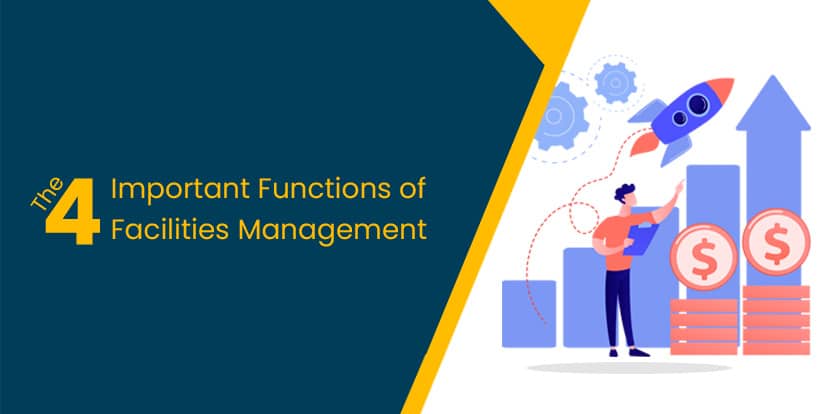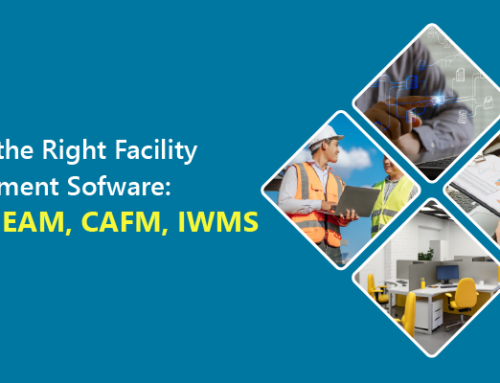This article will help you understand the four crucial pillars of facilities management – People, processes, the facility, and technology.
Facilities management, as such, has a broader sphere, making it challenging to define it in a nutshell. For instance, you can relate a sales manager’s position to managing their team of salespersons, but the functions of facilities management stretch far beyond merely “managing facilities.” And this is what makes it a lot more challenging for enterprises to realize and benefit from the advantages of a good facilities manager.
But what makes facilities management significant? It is easier to understand the duties of facility managers, their responsibilities, and their positive impact on an organization. Remember that a facility manager doesn’t merely have the HVAC kept in good condition or get broken doors fixed. They are responsible for ensuring everything is in place to keep a building functioning smoothly.
Facilities managers are typically responsible for delegating duties, dealing with internal and external personnel, and implementing strategic operational plans.
Keeping People in Mind
What’s the primary objective of a facility manager? It is to create an adaptable work environment for the employees. Creating an amenable work environment helps achieve several goals, the most crucial being: Drawing top talent and helping retain them. A safe and healthy workplace helps improve productivity and build a positive workplace culture. Facility managers help employees by:
- Organizing desking or hot-desking arrangements
- Overseeing employee directories
- Facilitating common facilities reservations
- Managing emergency planning
- Ensuring employees’ health and well-being
- Ensuring upkeep of the facility and critical equipment
Also, automation helps FM administration manage the Helpdesk, Ticketing, and Request Management. Facility managers provide a critical link between the workplace and the staff that works there. Be it an issue related to accommodation, comfort, health, or safety; the facility manager can resolve it quickly.
It is not just the employees that facility managers help but also hold the responsibility of providing critical planning data to the top management in the company, thus facilitating a long-sighted approach to workplace optimization. Interacting daily with the workplace helps determine the actual costs and competitive edge at the employee level.
Initiating Processes
Facility management functions become superfluous without a process to govern them. Setting up processes like facility requests or work order management, room reservations, etc., helps maintain order at the workplace. Once order is established, it creates a system of expectations, leading to a better organization that positively impacts how people use the workplace.
Your workplace relies on a multitude of processes for smooth functioning, like:
- Triggering and submitting work order requests
- Space reservations within the facility
- Welcoming and checking in visitors & guests
- Planning for emergencies
Facility managers have the dual responsibility of identifying administration areas and redesigning processes to cover them. When any challenging situation arises out of the blue, the facility manager must be ready to find order in chaos and create a solution worth repeating to handle any such scenario that may arise in the future.
Facility management can expand its reach by developing processes. Creating new processes involving various departments, spaces, assets, fixtures, and employees helps connect the several aspects of a business.
Facilities Maintenance and Development
True to its name, facility management is all about facilities maintenance and building improvement. This is the standard answer you get when you pose the question “What is facility management all about?”
It is best defined as a set of tools and services supporting the functionality, safety, and sustainability of buildings, infrastructure, and real estate. However, a facility manager does not merely tend to a building but is actively engaged in cultivating partnerships, future planning, and asset management.
A facility manager’s responsibilities are:
- Sourcing and maintaining vendor contracts
- Building improvement, including repairs and maintenance
- Maintaining the workplace with ambiance and décor
- Property management – both offsite and onsite
When it is related to the physical building, it always comes under the facility manager’s purview. Following the wage bill, enterprises spend the most on facilities. It is in the hands of the facility manager to convert the workplace into a competitive advantage rather than allow it to continue as a cost center. Facilities management is all about facilities that cater to the needs of the people using them.
Technology Integration
It is critically important for facilities managers to understand technology and use it to their benefit. Facilities management systems accumulate data that help make crucial decisions on how you must run the business and configure the workplace. A crucial responsibility rests with the facility managers – Identifying and implementing the right technology at the workplace.
Integrating physical technology is the responsibility of the IT department. However, it is the prerogative of facilities managers on how technology should be hand-picked, deployed, and leveraged.
Here are some examples of how it appears in a contemporary setting:
- Identifying IoT devices matching data collection needs
- Integrating IoT devices into the processes
- Arriving at the advantage, cost, and ROI of smart technologies
- Utilizing the collected data to gain an understanding of the workplace
Implementing an Integrated Workplace Management System, facility managers accumulate and scrutinize data from networked technologies to gain insights about the workplace. This aids with superior decision-making on optimizing the work environment to suit the people within.
However, not all office techs need to rely on data collection. While access control systems reinforce safety, automation tech helps streamline processes. Although every networked device and software has a data component, the benefit lies in its function. Facilities managers seeking optimal ROI must understand and leverage this function to gain maximum advantage.
Collating it all Together for Facilities Management
Facility managers back the workforce directly and indirectly. They have a purpose while establishing processes – Ensure order and organization. The onus of upkeep and improvement for the facilities lies with them. They are responsible for creating complex integrations that help leverage data to everyone’s advantage, for which they rely on a robust CAFM or IWMS platform. Each one can work independently or in tandem to ease facilities management tasks and develop forward-thinking plans. Such plans boost real estate decision-making, help achieve operational excellence, and provide an excellent employee experience.
Conclusion
Collating the above four main functions together, you get a picture of what facility managers do all the time. Looking at it from a broader perspective, they focus on optimizing the workplace to support the employees, and all aspects of the business operations. When you delve deeper, you’ll realize that facility management helps lay the foundation for the business’ success. Click here to learn more about how eFACiLiTY® can help your facility become secure and productive and help your business turn successful.













